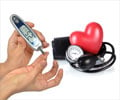Dolutegravir, a HIV drug could be linked to obesity and hypertension, says a new study
- Dolutegravir works by decreasing the amount of HIV in the blood and increasing the number of immune cells that help fight infections in the body
- Dolutegravir is more effective, affordable, and tolerable compared to other HIV medications
- New study shows that it may be linked to increased chances of developing hypertension and weight gain
TOP INSIGHT
Treatment for HIV with a drug called dolutegravir can increase the chances of developing hypertension
A new study led by a Boston University School of Public Health (BUSPH) researcher has confirmed these findings about DTG and weight gain, and it also found that people living with HIV who take DTG may also have a higher risk of developing high blood pressure.
Dolutegravir and Weight Gain
The study found that patients on ART gained an average of 1.78 kg (3.92 pounds) in 12 months after switching from EFV to DTG, compared to patients who remained on EFV. The results also showed that patients taking DTG increased their risk of developing hypertension by 14%, compared to patients who remained on EFV.As DTG will likely remain the drug of choice in first-line ART in LMICs, the researchers say that more studies are needed to understand whether weight gain from DTG is sustained over time, and if it is indeed linked to increased risk for hypertension and other non-communicable diseases, such as type 2 diabetes.
“The gain in weight was expected—this has been described in many other studies, and appears to be a weight-gain mitigating effect of efavirenz in a substantial number of patients, rather than dolutegravir causing weight gain,” says study lead author Dr. Alana Brennan, assistant professor of global health at BUSPH. “The blood pressure rise data is less clear, and in some ways more worrying if linked to the drug, as it appears fairly quickly after exposure. This needs to be carefully confirmed, and prior randomized controlled trials and observational evidence should be scrutinized before any conclusions are made.”
Researchers compared the absolute and percentage weight change and hypertension risk among black patients living with HIV who were of African descent, ages 16 and older, and who began their ART regimen between January 2010 and December 2020. The team matched 794 patients who switched from DTG to EFV, to 794 patients who remained on EFV, and examined a range of factors including sex, age, first ART regimen, number of months on ART, hemoglobin, body mass index (BMI), blood pressure, viral load, and CD4 count.
Dolutegravir could Increase the Risk of Hypertension
The team also observed that patients with existing high blood pressure at the start of the study had an increased risk of developing hypertension 12 months later. Female patients also had a slightly higher risk of developing high blood pressure, compared to male patients.The researchers say additional clinical trials will provide deeper insight into possible effects of DTG on long-term chronic illnesses among people living with HIV in LMICs. In the US, the drug bictegravir (BIC) is the preferred ART, but both BIC and DTG treatment have similar chemical compositions, side effects, and resistance, so “it will be important to scrutinize their databases in the same way,” says study senior author Dr. Francois Venter, research professor in the Faculty of Health Sciences at the University of the Witwatersrand.
“It is important not to leap to conclusions—this class of drugs confer huge benefits in terms of side effects and resistance benefits,” says Venter. “But we need to interrogate existing datasets quickly—blood pressure is routinely collected in pretty much everyone, so we should be able to quickly see whether this is something to worry about or not.”
Reference:
- Change in body weight and risk of hypertension after switching from efavirenz to dolutegravir in adults living with HIV: evidence from routine care in Johannesburg, South Africa - (https://www.thelancet.com/journals/eclinm/article/PIIS2589-5370(23)00013-5/fulltext)
Source-Medindia
 MEDINDIA
MEDINDIA




 Email
Email










